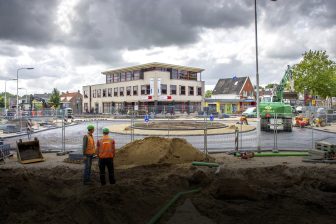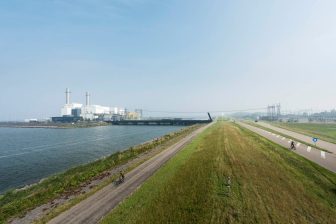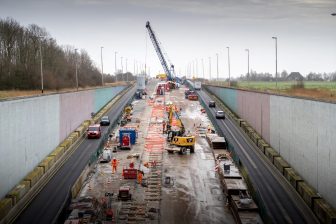Inauguration of the TGV Est high-speed line
high-speed rail link launched between Paris and Bratislava
Brussels, Belgium – Jacques Barrot, European Commission Vice-President responsible for transport, will inaugurate the TGV Est high-speed line on 15 March 2007. This will complete the first phase of work on the largest railway engineering project at the start of this century, which the European Union has cofinanced to the tune of €241 million. From June 2007, the new rail link will bring Strasbourg within 2 h 20 m of Paris and open the way to high-speed travel between France, Germany, Switzerland and Luxembourg. The 300 kilometres of track already built between Paris and Baudrecourt in Lorraine are the first section of a 1 500-kilometre European railway line intended to link Paris and Bratislava via Strasbourg, Stuttgart, Munich and Vienna.
“The movement of people is one of the keys to the building of Europe and to trade. By making Europe more accessible, the TGV Est high-speed line will create new economic prospects for the cities and regions through which it passes. This innovative line will make it possible to increase mobility while at the same time expanding what is the safest and most environmentally friendly mode of transport. The line will eventually become the French section of the ‘Magistrale pour l’Europe’, a 1 500-kilometre rail link between Paris and Bratislava intended to serve the heart of the continent, where 10% of the Union’s population lives” says Jacques Barrot, welcoming the development.
“The inauguration of this high-speed line marks an important stage in the building of this trans-European corridor" adds Mr Balázs, European coordinator of this priority transport-network project .
The line cuts travelling time by half and improves services to France’s large eastern region. The new high-speed route brings Strasbourg within 2 h 20 m of Paris; Metz and Nancy are within 1 h 30 m, and Reims within 45 m. Three new stations – Champagne-Ardenne TGV, Meuse TGV and Lorraine TGV – have been built to provide direct interprovincial links. It also opens the way to high-speed travel to Germany, Switzerland and Luxembourg: the journey time from Frankfurt to Paris will be 3 h 45 m instead of the current 6 h 15 m.
The fastest line in Europe, with a new speed record of 547 km/h and trains running at a commercial speed of 320 km/h, the TGV Est high-speed line is a technological miracle. Its construction has beaten all records: 60 million cubic metres of earth shifted, 12 million tonnes of materials transported (1 333 times the weight of the Eiffel Tower), 338 bridges, viaducts and wildlife culverts, 1 200 metres of track laid every day, and from 10 June 2007, when the line will be opened to the public, 11 million passengers are expected every year.
The line was financed by 22 partners. Out of the budget for trans-European transport networks, the EU has invested €230 million in the first phase of the work, or 7% of the total cost. The Community contribution, which is particularly large, makes TGV Est one of the EU’s most-funded transport projects to date.
For more informations http://pleinsfeuxsurlalgv.com
IP/07/329
U las zojuist één van de gratis premium artikelen
Onbeperkt lezen? Profiteer nu van de introductieaanbieding voor € 10,- per maand.
Bent u al abonnee?



